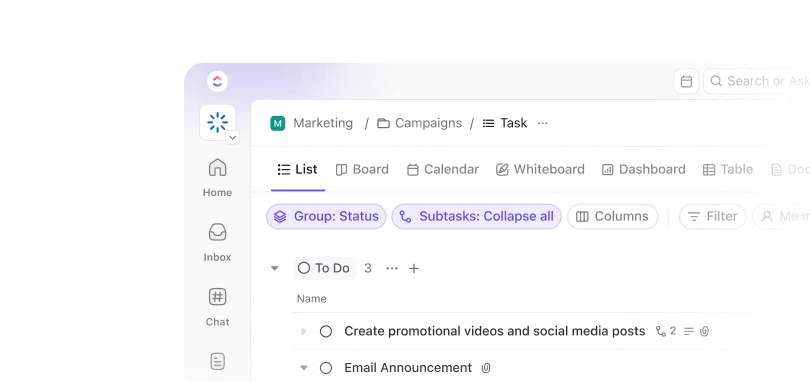Key Takeaways
- ServiceNow’s agentic AI transforms static processes into autonomous workflows.
- AI Agent Orchestrator coordinates tasks across departments intelligently.
- Native platform integration significantly reduces manual escalations and incidents.
- Effective deployment demands structured data and robust governance controls.
Does ServiceNow Offer Agentic AI?
Yes, ServiceNow offers a comprehensive agentic AI platform. It was first introduced with the Yokohama release that entered early access on January 30 2025 and reached general availability on March 12 2025, then expanded further throughout 2025.
ServiceNow’s agentic AI represents an evolution from scripted automation to fully autonomous digital teammates. These AI-powered agents reason, plan, and act on behalf of users across IT, HR, and customer service workflows.
They leverage AI Agent Orchestrator, AI Agent Studio, and Workflow Data Fabric to independently coordinate tasks, enforce policies, and proactively manage end-to-end processes without human intervention.
Unlike traditional chatbots that simply respond to user queries, ServiceNow’s agents actively monitor workflows, identify potential issues, and initiate corrective actions autonomously.
You can learn more about the top companies deploying AI agents here.
Quick Capability Snapshot: ServiceNow Agentic AI
ServiceNow’s agentic platform combines several core components to deliver autonomous workflow management across enterprise systems.
| Component | Detail |
|---|---|
| Orchestration Layer | AI Agent Orchestrator sequences tasks among multiple agents |
| Memory | Workflow Data Fabric unifies CRM, ERP, CMDB data in real time |
| Tool Invocation | ServiceNow workflows, Integration Hub connectors, MCP support |
| Guardrails | AI Control Tower monitors behavior and enforces policies |
| Pricing | Included in Pro Plus/Enterprise Plus with volume-based charges |
The platform’s strength lies in its native integration with existing ServiceNow infrastructure, allowing agents to immediately access established workflows, approval processes, and data repositories without requiring extensive system modifications.
How AI Agent Orchestrator Drives ServiceNow Agentic AI
The AI Agent Orchestrator serves as the central nervous system of ServiceNow’s agentic platform, coordinating multiple specialized agents to handle complex workflows that span departments and systems.
This orchestrator doesn’t just sequence tasks but intelligently manages handoffs, retries, and decision points throughout the process. The orchestration process follows these core operational steps:
- Initialize workflow context using data from the Workflow Data Fabric
- Deploy specialized agents based on task requirements and department needs
- Monitor agent interactions and coordinate handoffs between different agents
- Enforce governance policies through AI Control Tower integration
- Execute corrective actions when agents encounter errors or policy violations
- Document outcomes and update knowledge bases for future agent learning
The Workflow Data Fabric provides real-time access to enterprise data from CRM, ERP, and CMDB systems, giving agents the context they need to make informed decisions.
Meanwhile, AI Control Tower ensures that all agent actions comply with organizational policies and maintain audit trails for compliance requirements.

Pricing And Licensing: What ServiceNow Charges For Agentic AI
ServiceNow includes agentic AI capabilities within its Pro Plus and Enterprise Plus plans, providing thousands of prebuilt agents at no additional licensing cost starting March 2025.
This bundled approach makes the technology accessible to existing ServiceNow customers without requiring separate procurement processes.
However, consumption charges beyond plan allowances are not publicly disclosed, creating potential cost uncertainty for organizations planning large-scale deployments.
Workflow consumption may incur additional charges based on transaction volume and integration calls, particularly for complex multi-system orchestrations.
Key Strengths And Critical Gaps Of ServiceNow Agentic AI
ServiceNow’s agentic AI excels in environments where deep platform integration and workflow orchestration are priorities, but faces challenges when organizations need to incorporate significant non-ServiceNow data sources or handle highly specialized domain knowledge.
The platform’s greatest strength is its native integration with ServiceNow’s existing workflow engine, allowing agents to immediately leverage established approval chains, escalation procedures, and data relationships.
However, organizations with complex data landscapes may find integration challenging when critical information lives outside the ServiceNow ecosystem.
The platform also requires high-quality, well-structured data to function effectively, making data governance and cleanup essential prerequisites for successful deployment.
Tip: While Integration Hub provides connectors to external systems, complex real-time reasoning may still require human oversight, and early products rely on LLMs susceptible to hallucinations when handling edge cases or incomplete data.
Real-World Implementations Of ServiceNow Agentic AI
ServiceNow’s internal deployment serves as the primary case study, demonstrating measurable improvements in operational efficiency and user satisfaction across multiple use cases.
The company reports that AI agents reduced incident resolution time by 33% and decreased escalations by 18% across internal deployments during 2024.
These improvements stem from agents’ ability to automatically classify incidents, route them to appropriate teams, and initiate standard remediation procedures without human intervention.
Key implementation highlights include:
• IT Service Management: Agents automatically diagnose common network and application issues, applying standard fixes and escalating only complex cases
• HR Onboarding: New employee workflows are orchestrated across multiple systems, from equipment provisioning to access management
• Customer Service: Agents handle routine service requests while maintaining context across multiple interactions and systems
Users appreciate the platform’s natural language interface for creating agents and its seamless integration with existing ServiceNow workflows, though some note the learning curve required to design effective agent interactions for complex scenarios.
Roadmap And Competitive Outlook For ServiceNow Agentic AI
ServiceNow continues expanding its agentic capabilities through strategic acquisitions and platform enhancements, positioning itself as a leader in enterprise autonomous workflow management.
“AI Agent Orchestrator facilitates inter-agent communication, allowing teams of AI agents to work in harmony and streamline onboarding or security responses.” — Investing.com article summarizing ServiceNow press release (2025-03)
The competitive landscape positions ServiceNow against platforms like Microsoft’s Agent Framework and Salesforce Agentforce, with ServiceNow’s advantage lying in its deep workflow integration and governance capabilities.
Future developments include expanded AI Control Tower features, industry-specific agent templates, and potential consumption-based pricing models for high-volume deployments.
Getting Started With ServiceNow Agentic AI In 6 Steps
Successful ServiceNow agentic AI implementation requires careful planning and systematic deployment to ensure agents integrate smoothly with existing workflows and governance requirements.


Follow these implementation steps for optimal results:
- Assess current workflow complexity and identify high-volume, repeatable processes suitable for agent automation
- Enable platform prerequisites including Workflow Data Fabric and necessary Integration Hub connectors
- Deploy AI Agent Orchestrator and configure basic agent templates for pilot workflows
- Integrate enterprise data sources through Workflow Data Fabric to provide agent context
- Configure AI Control Tower governance policies and monitoring dashboards for agent oversight
- Monitor performance metrics and iterate agent configurations based on user feedback and operational results
Most organizations see initial results within 4-6 weeks of deployment, with full optimization typically achieved over 3-4 months as agents learn from operational data and user interactions.
Frequently Asked Questions
The platform uses Workflow Data Fabric to unify data from CRM, ERP, and CMDB systems, while Integration Hub provides connectors for external applications and services.
Core capabilities are included in Pro Plus and Enterprise Plus plans, but high-volume consumption may incur additional transaction-based charges.
AI Control Tower provides policy enforcement, audit trails, and centralized monitoring of all agent activities across the organization.
Yes, AI Agent Orchestrator coordinates multi-department workflows, handling handoffs and maintaining context as processes move between IT, HR, and customer service teams.
Next Steps And Action Checklist
ServiceNow’s agentic AI represents a significant step forward in enterprise workflow automation, particularly for organizations already invested in the ServiceNow ecosystem.
The platform’s strength in orchestrating complex, multi-department processes makes it valuable for large enterprises seeking to reduce manual interventions and improve operational consistency.
Use this checklist to guide your evaluation and implementation:
[ ] Review current ServiceNow platform utilization and identify automation candidates
[ ] Assess data quality and Integration Hub requirements for external system connectivity
[ ] Pilot agentic AI with 2-3 high-volume, well-defined workflows
[ ] Define performance metrics and establish baseline measurements before deployment
[ ] Plan governance policies and AI Control Tower configuration for organizational compliance
[ ] Schedule quarterly reviews to optimize agent performance and expand use cases


Everything you need to stay organized and get work done.













